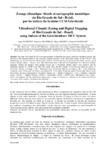Por favor, use este identificador para citar o enlazar este ítem:
http://www.alice.cnptia.embrapa.br/alice/handle/doc/1049976Registro completo de metadatos
| Campo DC | Valor | Lengua/Idioma |
|---|---|---|
| dc.contributor.author | TONIETTO, J. | pt_BR |
| dc.contributor.author | MANDELLI, F. | pt_BR |
| dc.contributor.author | WEBER, E. | pt_BR |
| dc.contributor.author | HASENACK. H. | pt_BR |
| dc.date.accessioned | 2016-08-01T11:11:11Z | pt_BR |
| dc.date.available | 2016-08-01T11:11:11Z | pt_BR |
| dc.date.created | 2016-08-01 | pt_BR |
| dc.date.issued | 2006 | pt_BR |
| dc.identifier.citation | In: CONGRÉS INTERNATIONAL DES TERROIRS VITICOLES, 6., INTERNATIONAL TERROIR CONGRESS, 7., 2006, Bordeaux: Montpellier. Comptes rendus... Bordeaux: Enita; OIV, 2006. v. 1, p. 21-26. | pt_BR |
| dc.identifier.uri | http://www.alice.cnptia.embrapa.br/alice/handle/doc/1049976 | pt_BR |
| dc.description | Abstract: The State Rio Grande do Sul is the main producer of Brazilian fine wines, with four viticultural regions. The objective is the characterization of the viticultural climatic potential of the State (total surface of 281.749 km2). The methodology use the Géoviticulture Multicriteria Climatic Classification System (Géoviticulture MCC System), based on three climatic indices ? Dryness Index (DI), Heliotermal Index (HI) and Cool Night Index (CI). Based on latitude, longitude, altitude and distance from Atlantic Ocean, the 3 viticultural climatic indices were modeled and the algorithms applied to a DTM using GIS. The results show that Rio Grande do Sul has the following classes of viticultural climate: according to DI ? Moderately Dry, Sub-humid, Humid; according to HI ? Cool, Temperate, Temperate warm, Warm and Very Warm; according to CI ? Cool nights, Temperate nights, Warm nights. Based on the total surface, the most representatives viticultural climates are: « Humid x Temperate » (3,1%), « Humid x Temperate warm » (14,4%), « Humid x Warm » (52,6%), « Sub-humid x Warm » (20,0%) and « Sub-humid x Very warm » (5,8%). According to CI, the viticultural climates have a range of variation as a function of the interaction between « earlyness of the varieties x heliothermal availability ». Key words: climate classification, climate models, climatic Groups, zoning | pt_BR |
| dc.language.iso | eng | eng |
| dc.rights | openAccess | eng |
| dc.subject | Zoneamento climático vitícola | pt_BR |
| dc.subject | Rio Grande do Sul | pt_BR |
| dc.subject | Classificação climatica | pt_BR |
| dc.subject | Modelo climático | pt_BR |
| dc.subject | Grupos climáticos | pt_BR |
| dc.subject | Zoneamento | pt_BR |
| dc.subject | Climate classification | pt_BR |
| dc.subject | Climatic Groups | pt_BR |
| dc.title | Zonage climatique viticole et cartographie numérique du Rio Grande do Sul - Brésil, par les indices du Système CCM Géoviticole. | pt_BR |
| dc.type | Artigo em anais e proceedings | pt_BR |
| dc.date.updated | 2019-03-08T11:11:11Z | pt_BR |
| dc.subject.thesagro | Clima | pt_BR |
| dc.subject.thesagro | Viticultura | pt_BR |
| dc.subject.nalthesaurus | climate models | pt_BR |
| dc.subject.nalthesaurus | zoning | pt_BR |
| riaa.ainfo.id | 1049976 | pt_BR |
| riaa.ainfo.lastupdate | 2019-03-08 -03:00:00 | pt_BR |
| dc.contributor.institution | JORGE TONIETTO, CNPUV; Francisco Mandelli; Eliseu Weber; Heinrich Hasenack. | pt_BR |
| Aparece en las colecciones: | Artigo em anais de congresso (CNPUV)  | |
Ficheros en este ítem:
| Fichero | Descripción | Tamaño | Formato | |
|---|---|---|---|---|
| toniettocitv6.pdf | 1,3 MB | Adobe PDF |  Visualizar/Abrir |









